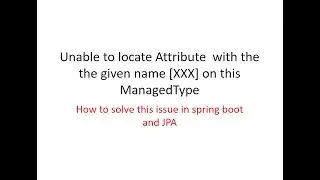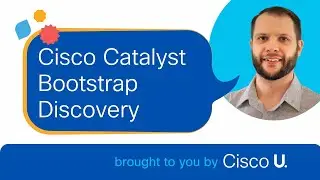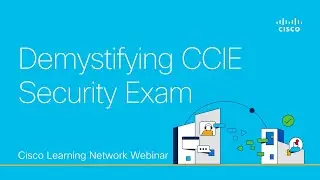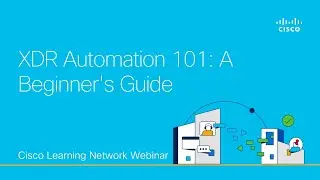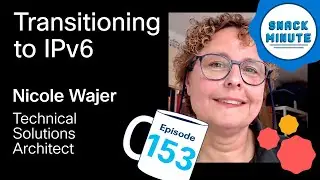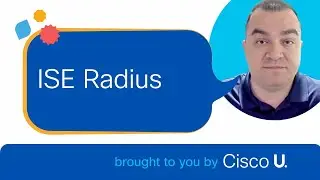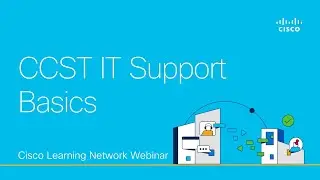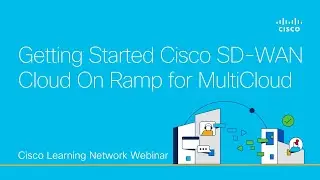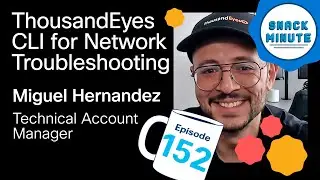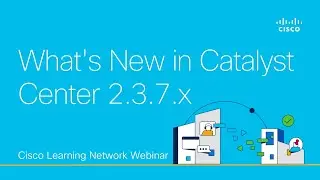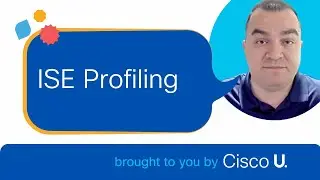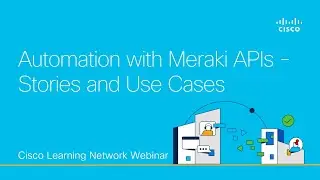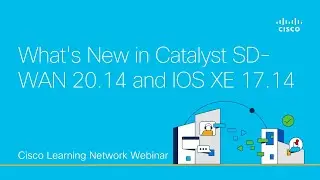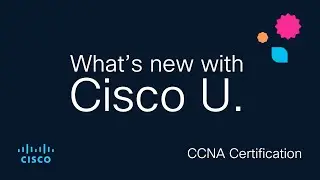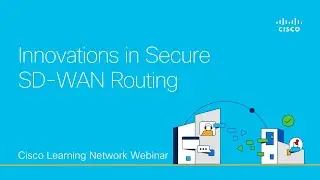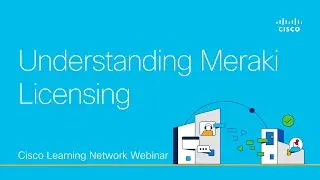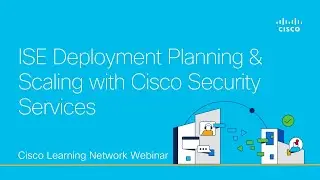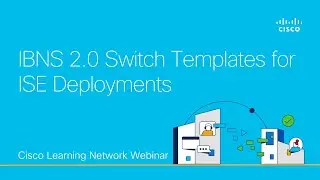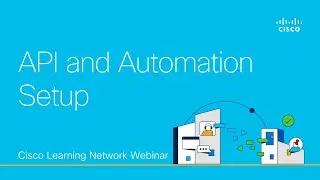Cisco CCNA Exam Topics: Network Access
To earn your CCNA certification, you must pass the 200-301 CCNA exam. This 120-minute exam tests your knowledge of network fundamentals, network access, IP connectivity, IP services, security fundamentals, and automation and programmability.
Developer Advocate at Cisco Learning and Certifications, John Capobianco, breaks down the second section in the CCNA Exam Topics, Network Access. This is a 6-part series - subscribe so you don't miss the next part.
This video will explore:
2.1 Configure and verify VLANs (normal range) spanning multiple switches
2.1.a Access ports (data and voice)
2.1.b Default VLAN
2.1.c InterVLAN connectivity
2.2 Configure and verify interswitch connectivity
2.2.a Trunk ports
2.2.b 802.1Q
2.2.c Native VLAN
2.3 Configure and verify Layer 2 discovery protocols (Cisco Discovery Protocol and LLDP)
2.4 Configure and verify (Layer 2/Layer 3) EtherChannel (LACP)
2.5 Describe the need for and basic operations of Rapid PVST+ Spanning Tree Protocol and identify basic operations
2.5.a Root port, root bridge (primary/secondary), and other port names
2.5.b Port states (forwarding/blocking)
2.5.c PortFast benefits
2.6 Compare Cisco Wireless Architectures and AP modes
2.7 Describe physical infrastructure connections of WLAN components (AP,WLC, access/trunk ports, and LAG)
2.8 Describe AP and WLC management access connections (Telnet, SSH, HTTP,HTTPS, console, and TACACS+/RADIUS)
2.9 Configure the components of a wireless LAN access for client connectivity using GUI only such as WLAN creation, security settings, QoS profiles, and advanced WLAN settings
CHAPTERS
00:00 Introduction to the CCNA Exam Topics Series
01:34 CCNA Exam Topics on the Cisco Learning Network
02:10 Network Access Introduction - Study Tips
03:15 2.1 Configure and verify VLANs (normal range) spanning multiple switches
05:43 2.2 Configure and verify interswitch connectivity
06: 13 2.3 Configure and verify Layer 2 discovery protocols (Cisco Discovery Protocol and LLDP)
07:00 2.4 Configure and verify (Layer 2/Layer 3) EtherChannel (LACP)
07:50 2.5 Describe the need for and basic operations of Rapid PVST+ Spanning Tree Protocol and identify basic operations
09:13 2.7 Describe physical infrastructure connections of WLAN components (AP,WLC, access/trunk ports, and LAG)
10:08 2.8 Describe AP and WLC management access connections (Telnet, SSH, HTTP,HTTPS, console, and TACACS+/RADIUS)
10:35 2.9 Configure the components of a wireless LAN access for client connectivity using GUI only such as WLAN creation, security settings, QoS profiles, and advanced WLAN settings
12:14 Conclusion
Learn more about the CCNA Exam Topics: https://learningnetwork.cisco.com/s/c...
and join the CCNA Study Community on the Cisco Learning Network: https://learningnetwork.cisco.com/s/t...
Learn more about Cisco U. http://cs.co/9001OQthl
Create a Cisco U. Free Account: http://cs.co/9001OQtCx
FOLLOW US ON SOCIAL
Twitter: / learningatcisco
Facebook: / learningatcisco
Instagram: / learningatcisco
LinkedIn: / cisco_training_and_certification
#CCNA #CiscoCert #CiscoU #Networking #Automation #Security




![SFS Cargo Door Tutorial *OLD VERSION* - [Blueprint] Spaceflight Simulator](https://images.mixrolikus.cc/video/45NyHlalazo)


